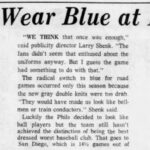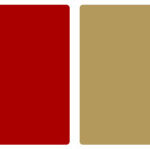Understanding the nuances of United States Marine Corps (USMC) Camo Uniforms, particularly the P42, P44, and Para Marine variations, requires a keen eye for detail. These uniforms, crucial for camouflage and functionality in WWII, are distinguished by specific design features, primarily in their pocket configurations and overall construction. This guide delves into the key differences between these iconic pieces of military apparel.
P42 Camo Trousers: Simplicity and Function
The P42 trousers are characterized by their straightforward design, prioritizing ease of use and practicality. A defining feature is the presence of only one small patch pocket located on the rear of each side. Furthermore, the front side-entry pockets are designed with an open-top configuration, lacking any flaps or closures. This streamlined approach marked the early design of USMC camo trousers, focusing on essential utility.
P44 Camo Trousers: Enhanced Utility and Design Refinements
In contrast to the P42, the P44 trousers showcase a more developed design with enhanced functionality. The most prominent difference is the large “butt pocket” or pouch that spans the entire seat area of the trousers, providing significantly more storage. Additionally, the side entry pockets on the P44 are equipped with flaps and snap closures, offering increased security and protection for the contents.
Subtle variations also exist within P44 patterns themselves. These can include differences in the number of snaps on the pockets and the presence or absence of grommets in the waistband. The number of belt loops can also vary slightly. These minor pattern variations highlight the evolving nature of uniform design during wartime.
Para Marine Camo Trousers and Suits: Unique Design Elements
Para Marine camo trousers, designed for specialized airborne operations, present distinct pocket placements. Unlike the P42 and P44, Para Marine trousers feature two rear pockets, each with flaps and snap closures. These pockets are positioned at opposing angles and are located more towards the center of the back of the trouser. The pocket flaps themselves are also angled, contributing to the unique visual signature of Para Marine uniforms.
It’s important to note that Paramarines were issued both a two-piece suit and a smock, specifically designed to meet their operational needs. While speculation exists that the P44 suit was developed as an improvement over the earlier two-piece Para Marine suit, concrete evidence to definitively support this theory remains limited. Anecdotal accounts and observations suggest that all three types of two-piece suits were used by Para Marines.
Fabric Weave: HBT Uniformity and Reproduction Differences
In terms of fabric weave, authentic P42, P44, and Para Marine camo uniforms should ideally utilize the same Herringbone Twill (HBT) weave. This weave is characterized by an alternating pattern, similar to that found in standard Army HBT shirts of the period. The camo pattern was achieved by dyeing this HBT cloth with camouflage colors. However, reproductions may deviate from this alternating weave, which is a key detail to consider when identifying original versus replica uniforms.
Conclusion:
Distinguishing between P42, P44, and Para Marine camo uniforms primarily hinges on recognizing the differences in pocket designs and placements. The P42 offers a simple, single rear pocket design, while the P44 boasts a large butt pocket and flapped side pockets. Para Marine trousers stand out with their uniquely angled, centrally placed rear pockets and were part of a broader uniform system including two-piece suits and smocks. Understanding these subtle yet significant differences is crucial for historians, collectors, and anyone interested in the details of USMC camo uniforms of the WWII era.


